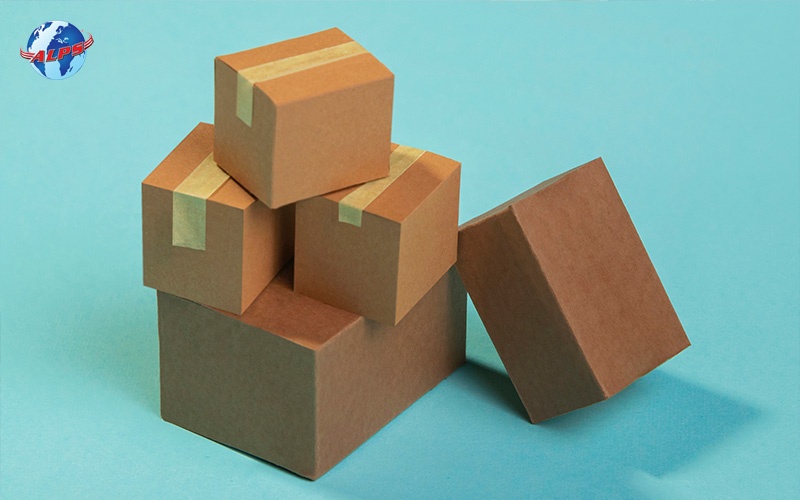Updated: Oct 19, 2022
STANDARD DRY CONTAINER

A standard container is the most common type of container in the market. It’s usually made of steel and sometimes aluminum. The aluminum containers have a slightly higher payload. In general, containers are airtight and water-resistant, preventing damage from the outside. One end of the container has doors through which the cargo is stowed. Despite the standardized sizes of 20 and 40-feet containers, the capacity of the containers can vary from operator to operator.
Standard containers can carry most types of dry cargo such as boxes, pallets, sacks, barrels, etc. It can be customized on the inside to carry a specific type of goods. For instance, hangers can be fit inside to carry clothes that could be directly transported to the store. Since standard containers are basic, they are not expensive.
Standard container dimensions
Measure | 20GP | 40GP |
Internal Length | 5.9m / 19.4ft | 12.03m / 39.5ft |
Internal Width | 2.35m / 7.8ft | 2.4m / 7.9ft |
Internal Height | 2.39m / 7.9ft | 2.39m / 7.9ft |
Tare Weight | 2,300kg / 5,071.5 lbs | 3,750kg / 8,268.8 lbs |
Payload Capacity | 25,000 kg / 55,126.9 lbs | 27,600kg / 61,200 lbs |
Cubic Capacity | 33.2 m3 / 1,172 cu ft | 67.7 m3 / 2,389 cu ft |
HIGH CUBES DRY CONTAINER

High cubes, in short HC, reefers to containers that are similar in structure to normal containers. The length and width remain the same, and the height increases. This enables them to meet more cargo demands.
High Cube Container Dimensions
Measure | 40HC | 45HC |
Internal Length | 12.03m/39.5ft | 13.55m/44.5ft |
Internal Width | 2.35m / 7.8ft | 2.35m / 7.8ft |
Internal Height | 2.70m / 8.10ft | 2.70m / 8.10ft |
Tare Weight | 3,900kg / 8,598 lbs | 4,800kg / 10,552 lbs |
Payload Capacity | 28,600 kg / 63,052 lbs | 27,700kg / 61,067 lbs |
Cubic Capacity | 76.3 m3 / 2,694.5 cu ft | 86 m3 / 3,037 cu ft |
REEFER CONTAINER

Reefer containers are nothing but container-sized refrigerators to move goods that need to be maintained at a certain temperature. The flooring of the container has T-shaped decking which sends chilled air into the container. This makes sure there is consistent airflow among the goods. They can maintain any temperature between -30°C and +30°C.
Reefer containers mostly come in 20-feet equivalent units. They carry temperature-sensitive items such as fruits, vegetables, ice cream, drugs, or meat. Each item has a different temperature requirement and it needs to be maintained to protect its freshness. The reefer container can be sectioned to cool and freeze at the same time. It is powered by a generator that provides electricity. When they’re on the road being transported by trucks, the containers are powered by fuel. The reefer container is expensive considering the power and maintenance requirements.
Reefer Container Dimensions
Measure | 20RF | 40RFHC |
Internal Length | 5.44m / 17.9ft | 11.56m / 37.9ft |
Internal Width | 2.29m / 7.5ft | 2.28m / 7.5ft |
Internal Height | 2.27m / 7.5ft | 2.25m / 7.4ft |
Tare Weight | 3,080kg / 6,791.4 lbs | 4,800kg / 10,584 lbs |
Payload Capacity | 27,700 kg / 61,078.5 lbs | 29,520kg / 65,080 lbs |
Cubic Capacity | 27.5 m3 / 2,093.3 cu ft | 67.3 m3 / 2,380 cu ft |
OPEN-TOP CONTAINER

Open-top containers, as the name suggests, have an open top. The roof of the container is covered with tarpaulin sheets instead of a solid roof. That way it can be covered or left open according to convenience. The container is made of steel with wooden flooring and the door heads can be swung open for easy loading and unloading. They’re usually in the sizes of 20-feet and 40-feet containers.
Open-top containers are used when cargo is too large to be in a regular shipping container. For instance, machinery or heavy materials that cannot be stowed sideways but arranged from the top through heavy-lifting cranes. These containers have larger capacities than the normal ones as the roof is open. It has lashing rings that keep the cargo stable and has the capacity to load 1000 kgs.
The open-top containers might be generally high in price as there are not many units in circulation in the market. The price may also differ based on whether the container is in “gauge” or not. As in if the height of the cargo is under the roof level or is protruding above the roof level. If the cargo is protruding, it is expensive and other containers cannot be stacked on top of it, and it is very wasteful.
Some of the common items loaded in an open-top are pipes, cables, construction materials, machinery, and bulky raw materials.
Open Top Container Dimensions
Measure | 40ft HC | 45ft HC |
Internal Length | 5.89m / 19.4ft | 12.03m / 39.5ft |
Internal Width | 2.35m / 7.8ft | 2.4m / 7.9ft |
Internal Height | 2.35m / 7.8ft | 2.34m / 7.8ft |
Tare Weight | 2,260kg / 5,982 lbs | 3,980kg / 8,774 lbs |
Payload Capacity | 28,220 kg / 62,214 lbs | 26,500kg / 58,422 lbs |
Cubic Capacity | 32.7 m3 / 1,155 cu ft | 66.7 m3 / 2,356 cu ft |
FLAT RACK CONTAINERS

Flat rack containers are used for heavy loads and cargo that need loading from the top or sides such as pipes, machinery, or busses. The containers only have sides on the short end of the container.
The numerous lashing rings allow the load to be secured safely and by legal regulations. For example, crates exceeding the size of a closed container can be loaded. It’s even possible to attach stanchions. Thus, creating a lateral boundary without having to forego the other advantages of a flat rack container.
The new generation of flat rack containers is capable of accommodating loads of up to 40,000 – 50,000 kilograms with uniform distribution of the load. Although this makes it possible to load the above-mentioned goods, they usually take up a single place on a container ship. Due to the dimensions of the cargo or its weight, stacking is not possible.
Flat Rank Container Dimensions
Measure | 40ft HC | 45ft HC |
Internal Length | 5.94m / 19ft | 12.13m / 39.8ft |
Internal Width | 2.35m / 7.7ft | 2.40m / 7.9ft |
Internal Height | 2.35m / 7.7ft | 2.14m / 7ft |
Tare Weight | 2,360kg / 5203.8 lbs | 5,000kg / 11,025 lbs |
Payload Capacity | 30,140 kg / 66,458.7 lbs | 40,000kg / 88,200 lbs |
Cubic Capacity | 32.7 m3 / 1,154.3 cu ft | 62.2 m3 / 2,195.7 cu ft |
TANK CONTAINERS

Tank containers are easily recognized, as their shape resembles more of a cylinder than a rectangular box. The containers, also known as tankers, are made of strong steel and anti-corrosive materials. Ensuring that the containers can sustain the transport – and protect the liquid material they carry.
As with any other container type, tank containers come in different shapes and sizes. Here’s how the measurements look like for a 20ft tank container.
Tank Container Dimensions
Measure | 20ft |
Inside Length | 6.058 m |
Inside Width | 2.438 m |
Door Width | 0 m |
Door Height | 0 m |
Capacity | 21,000 l |
Tare Weight | 26290 kg |
Depending on the size of the tank container, it can carry up to 26,000 liters. Here, it’s important to remember, that the tankers should be at least 80% full. That way the liquids can surge too much during transit. However, the container shouldn’t be more than 95% full either – otherwise, there won’t be room for thermal expansion.
Source:











